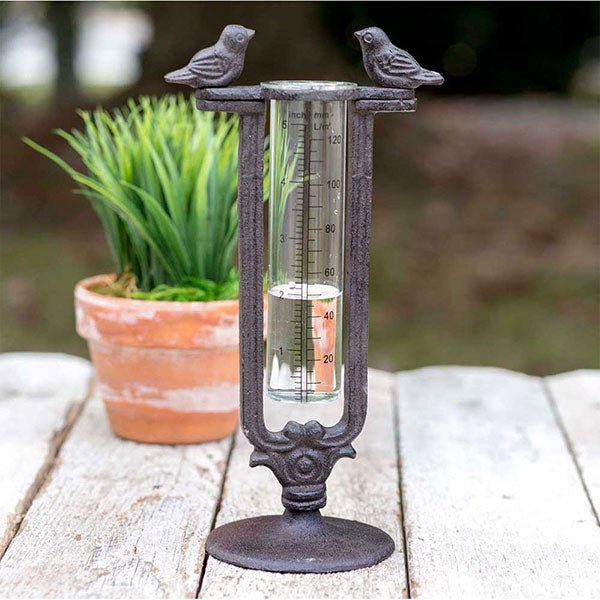Recognizing The Rain Gauge: Relevance, Kind, and Use Explained
Recognizing The Rain Gauge: Relevance, Kind, and Use Explained
Blog Article
DIY Rainfall Gauge: Simple Actions to Make Your Own
Are you thinking about tracking rains in your area? Creating your very own DIY rain scale is a easy and reliable method to record and measure rainfall. With just a few usual materials and some standard steps, you can quickly construct your own rainfall gauge in the house. In this overview, we will certainly offer you with a detailed process to aid you create your own rain scale. No demand for any specialized expertise or tools - this job can be finished by anyone. By complying with these simple directions, you will have a trustworthy device to measure rainfall and add to your understanding of the neighborhood weather patterns. So, let's get going on making your do it yourself rainfall gauge today!
Gather Materials
To start constructing your DIY rainfall gauge, collect all the necessary products using a thorough listing of things. Having the ideal materials on hand will make certain the successful production of your rain gauge and enable for accurate measurements of rains. Collecting these products beforehand will simplify the construction procedure and make certain that you have whatever you require to create your own Do it yourself rain gauge.
Prepare the Container

Mark the Dimension Increments
To properly measure the amount of rains, precisely marking the dimension increments on your DIY rainfall scale is necessary. Without clear and accurate markings, it would certainly be tough to identify the exact quantity of rainfall accumulated in your rain scale. Here are the actions to mark the measurement increments on your rain scale.
First, select the device of measurement that you wish to utilize. One of the most typical devices for determining rains are inches and millimeters. Utilize an irreversible marker or water-proof paint to mark the increments on the side of your rain scale once you have picked the unit. For inches, you can note every quarter inch or every fifty percent inch, depending upon your choice. For millimeters, you can mark every 10 millimeters or every 20 millimeters.
When noting the increments, it is very important to guarantee that they are equally spaced and plainly visible. Utilize a ruler or determining tape to make certain accuracy and consistency. Furthermore, ensure that the markings are immune to fading or abrading, as exposure to the components might trigger them to wear away with time.
Location the Rainfall Scale Outdoors
The rainfall gauge must be put outdoors to precisely additional info accumulate rains data. The location chosen for the rainfall scale need to be cost-free and open from any kind of blockages that might potentially affect the measurement of rains. The Rain Gauge.
In addition, it is critical to place the rainfall gauge on a stable surface area, such as a degree ground or a durable message. This will protect against any kind of activity or tilting of the gauge, which can bring about imprecise dimensions. It is likewise advisable to stay clear of putting the gauge near any resources of man-made water, such as sprinklers or drainage systems, as this can interfere with the accuracy of the dimensions.
Monitor and Document Rainfall Information
Routine monitoring and recording of rains data is important for exact information analysis and analysis. By tracking rains measurements, you can get important understandings into climate patterns, climate fads, and water resource administration. To efficiently check and tape-record rains data, it is very important to establish a regular and maintain constant practices.
First of all, ensure that your rainfall scale is positioned in an open area far from obstacles such as trees or structures that might obstruct rains. In addition, make sure the rainfall scale is level and firmly anchored to stop any motion that can affect the accuracy of the dimensions.

When videotaping the rainfall data, it is necessary to note the date see this website and time of each measurement. Utilize a leader or a determining adhere to establish the rains deepness in the rainfall scale, and document this details precisely.
To make certain the precision of the measurements, it is advised to empty the rainfall gauge after each recording. This will certainly stop any kind of overflow or dissipation from impacting subsequent measurements.
Conclusion
To conclude, producing a DIY rain scale is a functional and easy way to check and tape-record rains information (The Rain Gauge). By following the actions described in this write-up, you can quickly gather products, prepare the container, mark the dimension increments, and place the rainfall gauge outdoors. Routinely monitoring and taping rainfall information can provide useful information for different objectives
Having the ideal products on hand will make certain the successful development of your rain gauge and permit for accurate dimensions of rains.To accurately determine the quantity of rainfall, precisely noting the measurement increments on your Do it yourself rainfall gauge is vital.The rain gauge must be placed outdoors to precisely accumulate rains data. The place picked for the rain gauge must be open and free from any type of blockages that can possibly impact the dimension of rains.In conclusion, producing a DIY rainfall scale is a functional and straightforward means to keep track of and tape-record rains information.
Report this page